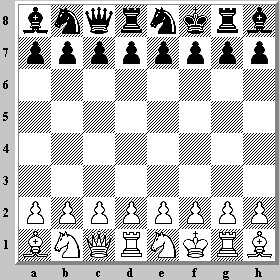In SP115 the a- & h-Pawns are undefended, while the e- & f-Pawns are protected only by the King. This is quite extraordinary and it would definitely be worth seeing how master level players have coped with these two SPs in practice.
I don't have a large collection of master level chess960 games. My ~1200 games from past Mainz events cover about 25% of the 960 start positions and neither of the two SPs is present. The CCRL collection (see the link under 'Resources' on the right) currently has 60 examples of SP115 and 52 of SP835, so I downloaded them to take a look.
After some practical experience with CCRL games, I'm less enthusiastic about their value to chess960 opening knowledge. The engines don't play with a book (meaning they don't 'learn') and they have no notion of what it means to follow a strategic opening plan. In my own games I have often found an initial move that none of the machines had played and that seemed like a reasonable move to me. After playing my own moves a few times and suffering no unexpected drawbacks, I stopped looking at the CCRL collection for ideas. With that in mind, let's look at SP115, pictured below.

SP115: BNQRNKRB
A quick analysis of the position reveals that none of the four weak pawns are susceptible to an immediate attack. The a- and h-Pawns are not easily attacked by any diagonal piece. The a-Pawn might be captured in three moves by a Knight, but in the time it takes to execute that plan, many countermeasures are possible. The moves most favored by the CCRL engines were...
12 1.Nc3
11 1.g3
11 1.g4
9 1.O-O
6 1.d4
5 1.b3
4 1.b4
...where the plan to develop one of the cornered Bishops by moving the b- or g-Pawn was used in half of the games. Whether to move the chosen Pawn to the third rank or to the fourth requires further consideration.
The move 1.Nc3 is first on the list, although I can't see a convincing reason for it. Is it with the idea of continuing Nc3-b5, attacking the a-Pawn? The most popular responses...
6 1...b6
3 1...O-O
2 1...d5
...indicate that Black isn't particularly concerned with rushing to the defense of the a-Pawn. Another popular move is 1.O-O, which I hadn't noticed until I looked at the CCRL games. It immediately transforms the 'weak Pawn' status of the e-, f-, & h-Pawns: the e-Pawn is now undefended, the f-Pawn is protected twice, and the h-Pawn is defended only by the King. In general, I'm not a big fan of castling on the first move. I prefer to see how my opponent develops a few pieces before I commit to castling on either side.
The other move on the preferred list, 1.d4, would be my personal choice for further inspection. It stakes a claim in the center, opens a diagonal for the Queen, creates a strong point for the Knight on d3, and is protected by the Rook. It also blocks the a1-h8 diagonal, allowing the Bishops on that diagonal to enter the game without being swapped immediately, a natural hazard of games which start with all Bishops in the corner.
All in all, the four weak Pawns don't play much of a role in the initial considerations. It's useful to know that they can't be easily attacked, but don't really serve as a guide for developing the other pieces.

No comments:
Post a Comment